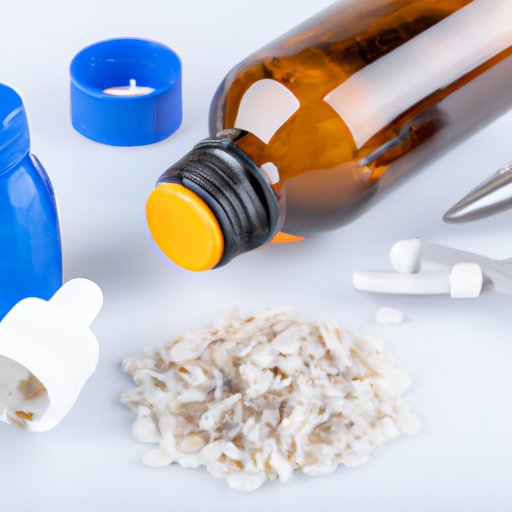
I. Introduction
Lice infestations can be a frustrating and uncomfortable experience, and it can happen to anyone regardless of age or lifestyle. The itchiness, red bumps and other symptoms that come with lice can be stressful and may lead to anxiety. However, with proper care and treatment, lice infestations can be treated and controlled. This article aims to provide essential information about lice infestations, including identifying symptoms, prevention and treatment options that will help you or your loved ones manage the condition effectively.
II. Identifying the Symptoms and Causes of Lice Infestation
One of the most common signs of lice infestations is an itchy scalp. You may notice small red bumps or scratches on the scalp or neck area. These tiny insects make their home in human hair, and the adult lice lay their eggs or nits on the base of the hair shafts. Poor hygiene habits, such as not washing hair frequently can increase the chances of lice infestations. Sharing personal items like hats, combs, and pillows can also lead to lice infections. To avoid lice infestations, it is best to avoid contact with people that have lice and sharing personal items.
III. Natural Remedies for Lice Treatment
Several natural remedies can be used to treat lice infestations. These remedies include essential oils like tea tree oil, peppermint oil, and eucalyptus oil. Vinegar, mayonnaise, and coconut oil are also useful natural remedies. However, it is essential to observe the recommended usage of these remedies to ensure safe and effective treatment. The duration and frequency of application depend on the severity of the lice infestation. It is also essential to use a fine-toothed comb after applying the remedies to remove the dead lice and nits. This will help to prevent lice re-infestation.
IV. Prescription Medications for Lice Treatment
In severe cases, prescription medications may be required to treat lice infestations. Permethrin and malathion are common prescription medications used to treat lice infestations. These medications work by killing the adult lice. However, it is essential to note that prescription medications can have side effects such as skin irritation or rashes, and they should only be used under the guidance of a doctor or a pharmacist. Application of these medications should also be done carefully, avoiding contact with the eyes and mouth.
V. The Importance of Regular Cleaning and Maintenance
In addition to medication, regular cleaning and maintenance of personal and household items can help to prevent lice infestations. Washing bedding and towels in hot water will kill any lice or nits that may be present. Cleaning combs, brushes, and hair accessories with hot water and soap will also help to eliminate any eggs or lice. Vacuuming carpets and furniture will ensure that there are no lice hiding in them. Observing good hygiene habits, such as washing hair regularly, can also help prevent lice infestations.
VI. Professional Lice Treatment Services
Professional lice treatment services can be helpful in cases of severe or persistent lice infestations. These services provide various treatments options, such as in-home or salon treatments. Seeking professional help can be helpful as these professionals have the training and skills necessary to identify and remove lice infestations successfully. However, it is essential to check their credentials and experience before choosing a professional lice treatment service.
VII. Lice Prevention and Education
Prevention and education are essential tools in the fight against lice infestations. Businesses and organizations should provide education and awareness campaigns about lice infestations to help people identify the symptoms and understand how to prevent infestations. Schools should also follow specific guidelines to avoid and control infestations. Parents should maintain a high level of hygiene in their homes and educate their children about the dangers of lice infestations.
VIII. Best Practices for Lice Treatment
When treating lice infestations, it is essential to follow instructions carefully, remove all nits, and use a fine-toothed comb. Not following instructions or skipping nits removal can lead to re-infestation. Avoiding close contact with people or items that may be infested is also crucial. Keeping personal items clean and avoiding sharing them is also essential.
IX. Conclusion
Lice infestations can be a distressing experience, but with proper treatment and prevention, they can be managed and controlled. This article provided information on identifying symptoms, natural remedies, prescription medications, prevention methods, professional lice treatment services, and best practices for effective treatment. Taking action and seeking help if you encounter lice infestations are the first steps to successful treatment and management of lice infestations.





